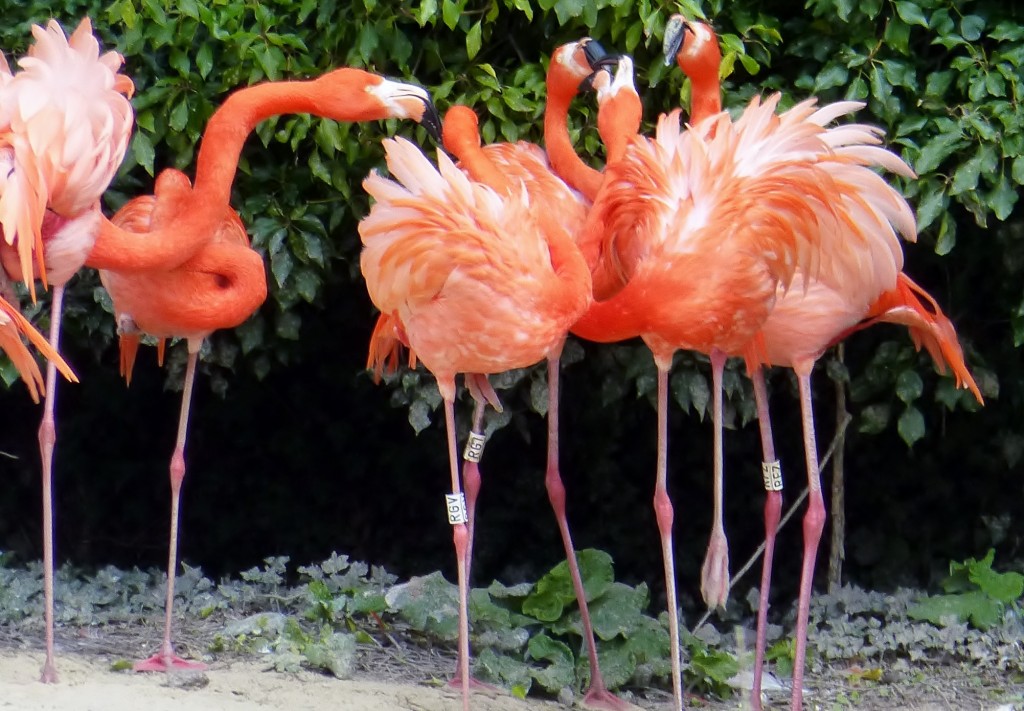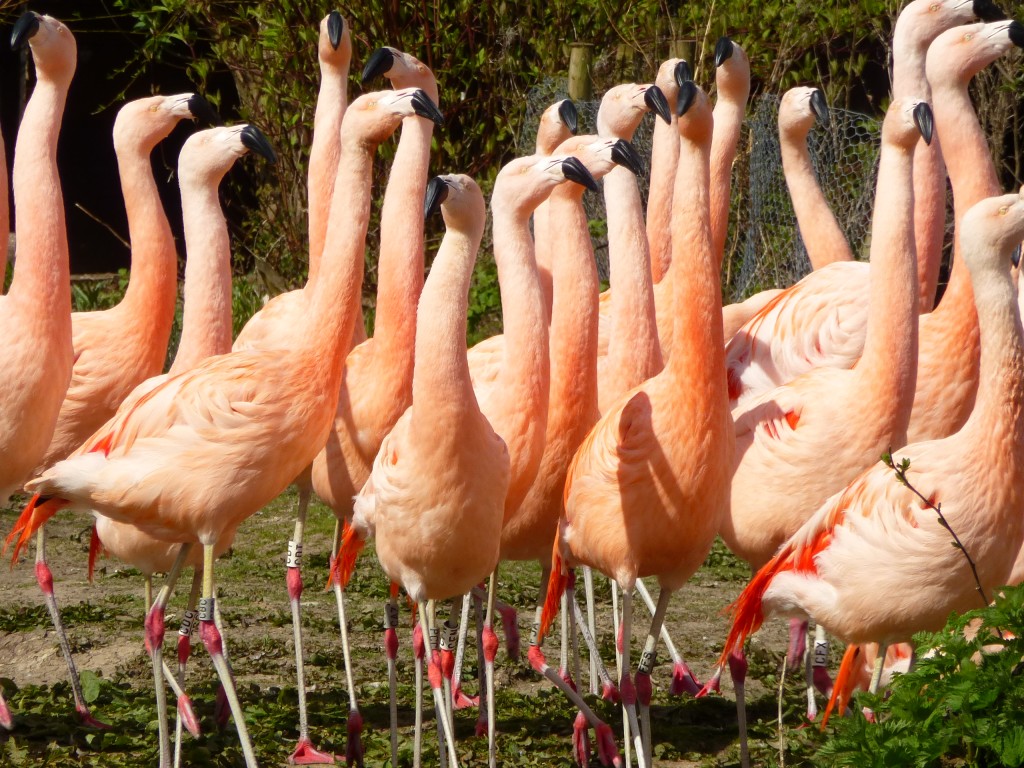Playing, squabbling or dancing?
The showy displays of flamingos are really easy to observe and continue to delight visitors every year at each of the four WWT centres that house these birds. Flamingos are very vocal and their strident calls carry far across each Wetland Centre. Indeed, at Slimbridge you can hear the Caribbean and greater flamingos at opposite ends of the grounds when the whole flock starts shouting! Accompanying this melody of calling are lots of very intricate and sophisticated postures that tell other flamingos in the group what is going on. Some of these behaviours are easy to work out the reason behind. Others can be open to misinterpretation. I thought I would give a bit of a pictorial guide to a few of these activities that might cause a bit of confusion.
Flamingos are often seen spreading the feathers that lie over their wings. These are scapular feathers (attached to their "shoulder") and are long and thin. The birds raise them when they are annoyed, angry or in a disagreement. Flamingos don't raise these feathers when they are doing a courtship display. So if you see a behaviour like the one illustrated below this is not dancing or playing, this is squabbling.

Sometimes the show of size and strength does not always work and things get a bit more pushy. Birds will wind their necks around each other and jab and peck with their beaks. These fights do not last for very long but they can be quite violent and sometimes a flamingo gets pushed over. The short clip below shows this fighting behaviour between some Caribbean flamingos. So if you see birds winding their necks together and pushing with their beaks, again this is not a mating dance or playing, this is yet more squabbling. I can assure you that flamingos DO sometimes like each other and they don't spend all of their time fighting!
[yframe url='http://www.youtube.com/watch?v=tfrNr4aZ4u4']
So what about behaviours that are a little more friendly? Well, when flamingos do do their courtship displays you will normally see them all standing in a similar way; normally in the same direction and normally performing in a uniform, regimented fashion. Each bird knows what to do and there is a fluid movement across the flock. No poking, no jousting, no fighting. The birds keen to show off how pretty they look so it's not likely that they are going to start squabbling! In the photo below of the Chilean flamingos you can see the tall, stretched pose that the birds will use when they are in a mating dance. It can be easy to confuse with fighting and more "angry" behaviour but the bird's demeanour is very different.

And what about playing? Well you will sometimes see flamingo chicks charging around after each other. Strengthening their legs and toning their muscles. As chicks often gather in groups these flurries of activity are important for the birds to grow up big and strong. I'm not sure if it is playing in the same sense as human children but it sure does look like fun! With many flamingo chicks currently being seen at WWT Slimbridge, Llanelli and Martin Mere you'll be able to pick out these grey bouncing bundles for yourselves. So hopefully this gives readers a small insight into these different activities and how to tell them apart. Now go and turn yourselves in flamingo behaviour experts!



